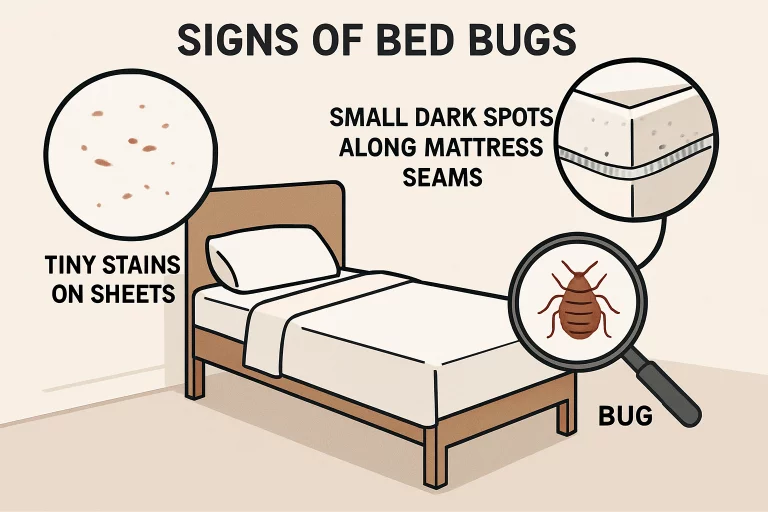Effective Strategies for Bed Bug Detection and Treatment

Table of Contents
Introduction
The resurgence of bed bugs in homes, hotels, and public spaces has become a pressing concern affecting the hospitality industry and private residences globally. Due to these pests’ elusive nature and remarkable ability to adapt to various environments, it is difficult to address the problem with outdated or singular approaches. A keen awareness of bed bug detection and treatment strategies is fundamental to containing an outbreak in its earliest stages and ensuring that your living or working space remains healthy. Because bed bugs are well-adapted to hiding in tiny cracks and crevices, and many have developed resistance to common chemical treatments, arming yourself with a blend of tried-and-true methods plus state-of-the-art technology offers the most effective protection.
In this comprehensive guide, you’ll find in-depth explanations on identifying the first warning signs of a bed bug problem, detailed overviews of time-tested and cutting-edge detection methods, and a breakdown of the most effective treatment solutions available. With this knowledge, you’ll be empowered to take swift and effective action, reducing the likelihood of severe infestations and ensuring greater peace of mind.
Recognizing the Signs of Bed Bug Infestations
Recognizing the early signs of bed bug infestation is not only helpful, but it is vital. Bed bugs are nocturnal, feeding at night, and skilled at staying out of sight during the day, which allows them to multiply quickly before they are detected. Despite their best efforts to remain hidden, their presence typically leaves behind distinct evidence that can help diligent homeowners catch infestations early:
- Stains on Bedding: Small, reddish-brown, or rust-colored stains often appear on sheets, pillowcases, and mattresses. These spots are usually caused by bed bugs being inadvertently crushed or by undigested blood left behind after feeding.
- Dark Spots: Tiny, ink-like dark spots are likely bed bug fecal matter, and may be seen not only on bedding but also along mattress seams, behind headboards, on upholstery, and even in drawer joints or wooden furniture cracks.
- Musty Odors: When bed bug numbers increase, their scent glands emit a sweet, musty, and sometimes overpowering odor. This smell is often more pungent in rooms or spaces where bed bugs have established significant populations.
- Bite Marks: Bed bug bites are typically painless at first but soon develop into red, itchy welts that appear in clusters or linear patterns on exposed skin. While these bites can sometimes be mistaken for other insect bites, their regularity and location (such as arms, neck, or face) can be a giveaway.
Recognizing and acting on these indicators early can dramatically reduce the scope and expense of bed bug control efforts, allowing intervention before the situation becomes overwhelming.

Traditional Detection Methods
Despite the surge in modern pest detection innovations, traditional bed bug search techniques remain an irreplaceable foundation for initial evaluation. A careful, systematic inspection is often the first and crucial step in confirming the existence of a problem. Bed bugs favor areas where they have easy access to a sleeping host, but they can quickly migrate to nearby hiding spots:
- Mattresses and Box Springs: Thoroughly scan all seams, tufts, tags, and the underside for minor, minor, oval-shaped bugs or their pearly white eggs. Don’t forget to closely check corners and tight folds where eggs and nymphs may cluster.
- Bed Frames and Headboards: Examine the joints, screw holes, and areas where headboards meet the wall for hidden insects, eggs, or excrement stains. Detaching the headboard (if possible) can reveal hidden harborage areas.
- Carpets and Baseboards: Bed bugs may slip beneath carpeting along the edge of walls or nestle behind cracked baseboards and wallpaper. Use a flashlight to check for signs in these confined spaces.
- Furniture and Upholstery: Lift couch cushions, inspect under sofas, and closely examine seams, bows, and tufts, as bed bugs often reside near sleeping quarters.
Employing basic tools like a flashlight, a stiff card for probing, and a magnifying glass can dramatically increase your chances of finding bed bugs or their minuscule, sticky eggs, sometimes no larger than a pinhead. For a thorough, step-by-step inspection process, see this detailed resource from the EPA.
Innovative Detection Technologies
Recent advances in pest control technology have revolutionized how we find and manage bed bugs in challenging environments. Many modern pest management professionals now leverage a combination of innovation and experience, significantly boosting detection rates and making it easier to respond quickly. Two leading breakthroughs include:
- Canine Detection: Specially trained dogs rely on their extraordinarily keen sense of smell to locate a single bed bug or egg in cluttered or expansive spaces. Canine detection is fast, accurate, and capable of identifying infestations in homes and commercial properties where manual searches would be slow or disruptive.
- Electronic Monitors: Cutting-edge systems like the Spotta monitor use synthetic pheromones that mimic bed bug communication signals. These attract bed bugs into a monitored trap equipped with cameras, which send real-time notifications of movement. Such devices are a game-changer for large buildings, hotels, and multi-unit residences, enabling consistent, noninvasive monitoring across multiple rooms without constant human intervention.
Combining innovative science with practical know-how greatly increases the chances of identifying an infestation early, where intervention is quicker, less costly, and more likely to succeed.
Effective Treatment Options
After verifying a bed bug infestation, swift intervention with the proper treatment techniques is your best bet for eradication and minimizing further dispersal. The optimal solution often depends on the severity of the infestation, the type of property, and the need to balance speed with environmental concerns:
- Heat Treatments: All life stages of bed bugs—including resilient eggs—are destroyed at sustained temperatures over 120°F. Professionals use commercial-grade heating systems to raise and maintain room temperatures for several hours methodically. This technique is ideal for treating entire rooms. It is particularly appealing because it is for chemical use, making it a preferred option for schools, hospitals, and homes with sensitive populations.
- Chemical Treatments: Targeted sprays of insecticide explicitly formulated for bed bug control are effective but must be used with precision. Many commercial products now include insect growth regulators (IGRs) to disrupt reproduction. Due to rising resistance among bed bug populations, it’s critical to use only EPA-approved products labeled for bed bug control and rotate compounds or pair them with non-chemical techniques when appropriate.
- Fungal Biopesticides: Innovative biopesticides, such as Aprehend, apply a natural strain of fungus that infects and eliminates bed bugs after contact. Because it uses an approach based on the bugs’ natural behavior, this method has become increasingly popular as part of an integrated pest management program, especially in green-conscious environments.
Penetrating, entrenched infestations almost always require a combination of approaches for complete eradication. Trained pest professionals assess each site on a case-by-case basis to create a comprehensive plan that maximizes speed and safety for all occupants.
Preventive Measures
Eradicating a bed bug infestation is only the beginning—adopting strong prevention protocols is essential to reduce your risk of a recurring issue. Implementing routine and proactive steps can make your property less attractive to bed bugs and keep you one step ahead:
- Frequent Inspections: Make it a habit to regularly examine sleeping zones, headboards, and the bases of walls, especially after vacations or if you’ve hosted overnight guests.
- Protective Covers: For mattresses and box springs, use encasements rated as bed bug-proof. These not only stop bugs from nesting inside, but they also make routine visual checks far simpler.
- Declutter Living Spaces: Streamline your belongings and keep spaces organized. Clutter is a harbor for pests, making it difficult to conduct thorough inspections.
- Cautious Acquisitions: Be vigilant about secondhand furniture, clothing, and bedding. If you bring used items into your home, first inspect and clean them thoroughly.
Proactive defense—combined with rapid intervention at the first sign of trouble—can drastically reduce the risk of another infestation and the stress and expenses associated with repeated treatment.
When to Seek Professional Help
Despite the appeal of DIY bed bug control methods, substantial or persistent infestations almost always demand the expertise of a licensed pest control team. Pest professionals bring advantages like access to industrial-strength treatments, highly sensitive detection devices, regulated pesticide application methods, and extensive field experience, which are critical for resolving embedded issues that household products cannot touch.
Attempting to manage a severe infestation without the right expertise can unintentionally spread pests to other rooms or even neighboring apartments. Incomplete or improper treatments may also foster resistance among bed bug populations, making them even harder to eradicate in the future. Early intervention from experts ensures that the entire infestation, including hidden and satellite populations, is targeted and eradicated safely.
Conclusion
Achieving and maintaining a bed-bug-free environment requires vigilance, current knowledge, and a comprehensive suite of detection and treatment tools. By staying alert for signs of infestation, utilizing a mix of traditional methods and cutting-edge technologies, and calling on experienced professionals when needed, you dramatically improve your chances of successfully protecting your property and loved ones. For more insights and a thorough overview of bed bug detection and treatment, always turn to reputable pest control services that combine expertise and innovation for the best results.






